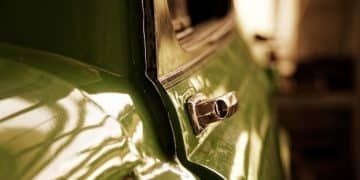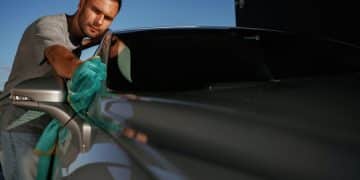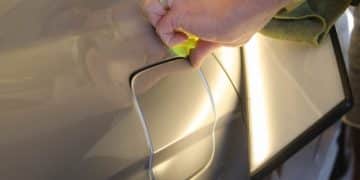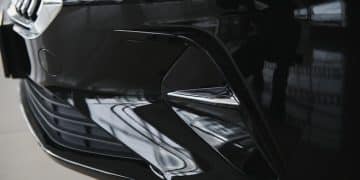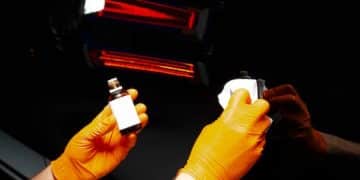The Secret to Long-Lasting Ceramic Coating: Maintenance Tips
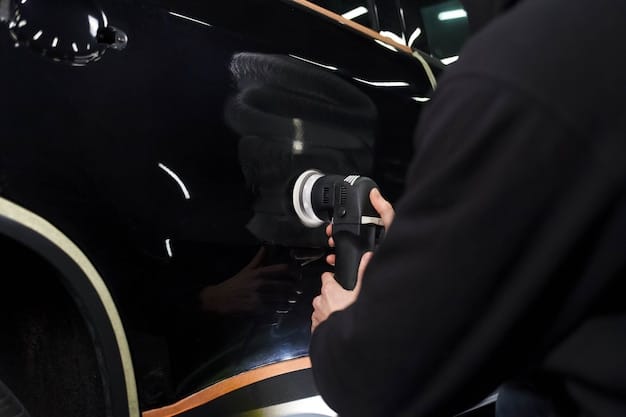
The secret to long-lasting ceramic coating lies in proper maintenance and aftercare, including regular washing, avoiding harsh chemicals, and using appropriate detailing products.
Want to keep your car looking its best? The secret to long-lasting ceramic coating: proper maintenance and aftercare tips, are key. Let’s dive into how to protect that shine.
Understanding Ceramic Coating and Its Benefits
Ceramic coating has revolutionized car care, offering a durable layer of protection against environmental hazards. Understanding what it is and its advantages is the first step to ensuring its longevity.
It’s more than just a wax; here’s what you need to know.
What is Ceramic Coating?
Ceramic coating is a liquid polymer applied to a vehicle’s exterior to protect the paint. It creates a chemical bond with the factory paint, forming a layer of protection.
Benefits of Ceramic Coating
Beyond shine, it offers several key benefits:
- Shields against UV rays, preventing paint fading.
- Provides resistance to scratches, swirl marks, and minor chips.
- Makes cleaning easier with its hydrophobic properties.
- Protects against chemical stains and etching.
Proper maintenance is essential to unlock these benefits fully. Understanding the nature and advantages of ceramic coating sets the stage for effective aftercare.
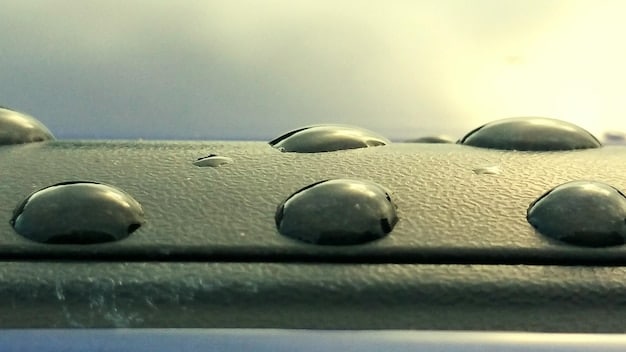
Essential Washing Techniques for Ceramic Coated Cars
Washing your ceramic-coated car requires special attention to preserve the coating’s integrity. The right techniques can make all the difference.
Let’s look at the best practices.
The Two-Bucket Method
This method is crucial for minimizing swirl marks:
- Use one bucket for soapy water and another for rinsing your wash mitt.
- Rinse the mitt in the rinse bucket before re-dipping into the soap bucket.
- This keeps dirt and contaminants away from the clean soapy water.
Use of pH-Neutral Soap
Choosing the right soap is vital:
- Opt for pH-neutral car wash soaps designed for ceramic coatings.
- Avoid harsh detergents or abrasive cleaners.
- pH-neutral soaps gently lift dirt without damaging the coating.
Drying Your Car Properly
Proper drying is as important as washing:
- Use a clean, soft microfiber towel to dry your car.
- Alternatively, use an air blower to avoid physical contact.
- Ensure the car is completely dry to prevent water spots.
With these washing techniques, you can keep your car clean and maintain the ceramic coating’s protective qualities.
Avoiding Harsh Chemicals and Abrasive Cleaners
The longevity of your ceramic coating depends on avoiding harmful substances that can compromise its integrity. Understanding what to avoid is just as important as what to use.
Let’s explore these common hazards.
Stay Clear of Acidic or Alkaline Cleaners
Acidic or alkaline cleaners are harmful because they can break down the coating. Look for pH-neutral products.
Avoid Abrasive Cleaning Tools
These can cause scratches and swirl marks, diminishing the coating’s effectiveness. Soft microfiber cloths are best.
Steer Clear of Automatic Car Washes with Brushes
Automatic car washes with brushes can be too aggressive. The brushes often trap dirt and can scratch the coating. Opt for touchless washes if you can’t wash by hand.
Avoiding these harsh chemicals and abrasive tools will help prolong the life of your ceramic coating and preserve its shine.
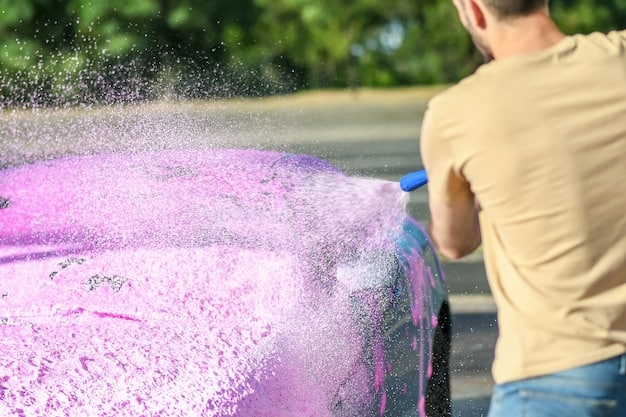
The Role of Regular Inspections
Regular inspections are key to identifying and addressing potential issues early on. A proactive approach can save time and money in the long run.
Here’s what to look for.
Checking for Water Beading
Water beading indicates the coating’s hydrophobic properties are intact. If water no longer beads, the coating may need attention.
Looking for Swirl Marks or Scratches
Check for any signs of damage on the surface. Early detection can prevent further issues.
Identifying Contaminant Buildup
Contaminants like tree sap or bird droppings can harm the coating if left unattended. Regular removal is crucial.
By performing regular inspections, you can proactively address issues and maintain the ceramic coating’s performance.
Using Ceramic Coating Maintenance Products
Specialized maintenance products can enhance and extend the life of your ceramic coating. Choosing the right products is an important part of aftercare.
Let’s explore your options.
Ceramic Boost Sprays
These sprays enhance the coating’s hydrophobic properties and add extra shine. Apply after washing for best results.
Detailing Sprays with Ceramic Components
These sprays offer a quick and easy way to maintain the coating’s gloss between washes. They also help remove light dust and fingerprints.
Specialized Car Shampoos for Ceramic Coatings
These shampoos are formulated to gently clean and protect the coating, without compromising its integrity. Use regularly for best results.
Using these specialized products will help maintain the performance and appearance of your ceramic coating.
DIY vs. Professional Maintenance: Knowing When to Seek Help
While you can handle some aspects of ceramic coating maintenance yourself, certain issues require professional attention. Knowing the difference can save you from potential mistakes.
Let’s consider the scenarios.
When DIY is Sufficient
Routine washing, applying ceramic boost sprays, and quick detailing can all be done at home. These tasks help maintain the coating’s performance between professional services.
When Professional Help is Needed
If you notice severe scratches, etching, or a significant decline in water beading, it’s time to consult a professional. They can assess the damage and recommend the appropriate solution, such as reapplication or repair.
If the coating is failing despite your best efforts, a professional can diagnose underlying issues. They can also offer advice on how to prevent these problems in the future.
Knowing when to seek professional help ensures your ceramic coating remains in top condition.
| Key Point | Brief Description |
|---|---|
| 🧼 Washing Techniques | Use the two-bucket method and pH-neutral soap. |
| 🚫 Harsh Chemicals | Avoid acidic/alkaline cleaners and abrasive tools. |
| 🔍 Regular Inspections | Check for water beading, scratches, and contamination. |
| ✨ Maintenance Products | Use ceramic boost sprays and specialized shampoos. |
Frequently Asked Questions
▼
Washing your car every two weeks is generally recommended. However, if you drive frequently or in harsh conditions, weekly washes might be necessary to remove contaminants.
▼
No, you should only use pH-neutral car wash soaps specifically designed for ceramic coatings. Regular soaps may contain chemicals that can degrade the coating.
▼
With proper maintenance, a ceramic coating can last anywhere from two to five years. The lifespan depends on factors like climate, driving conditions, and aftercare practices.
▼
Signs of failure include reduced water beading, loss of gloss, and decreased resistance to scratches and contaminants. These indicate the coating’s protective qualities are diminishing.
▼
It’s generally not recommended to use wax on top of a ceramic coating. Wax can interfere with the coating’s hydrophobic properties and attract dirt. Instead, use ceramic boost sprays.
Conclusion
Maintaining a ceramic coated car involves simple yet consistent practices. By following these guidelines, you’ll extend the life of your coating and keep your car looking its best.
